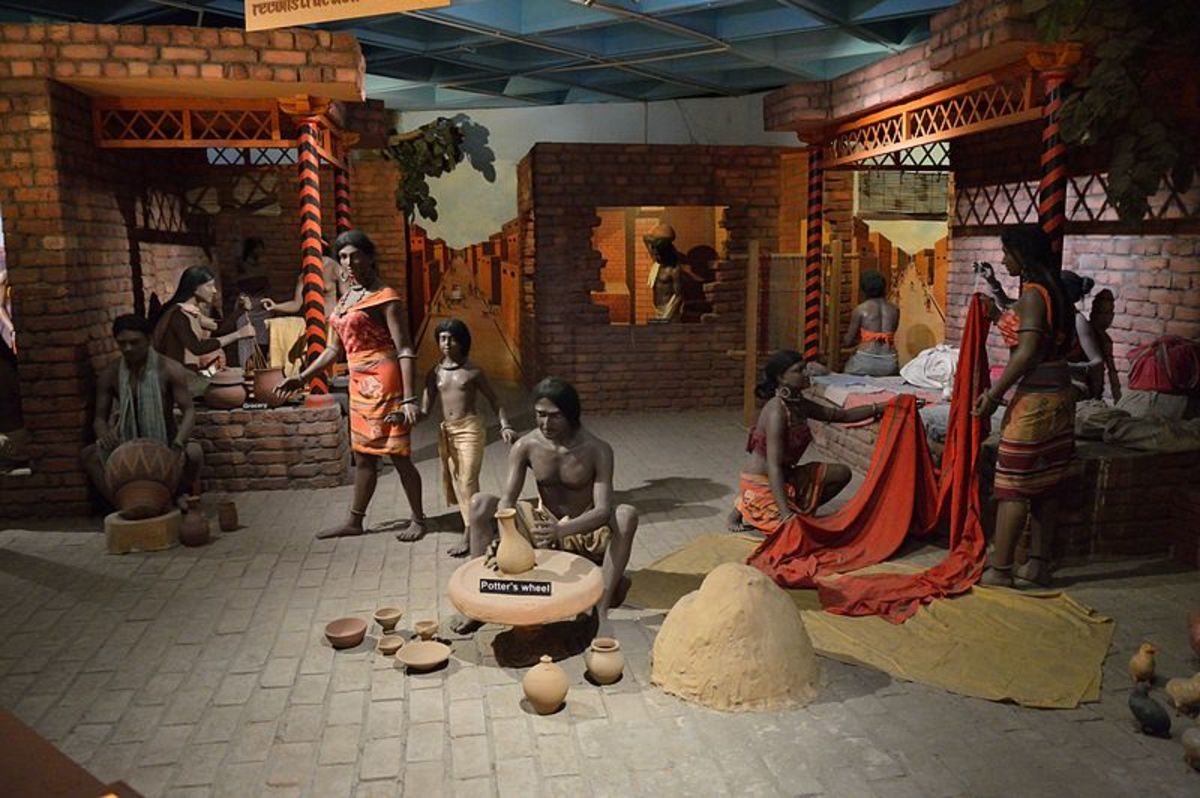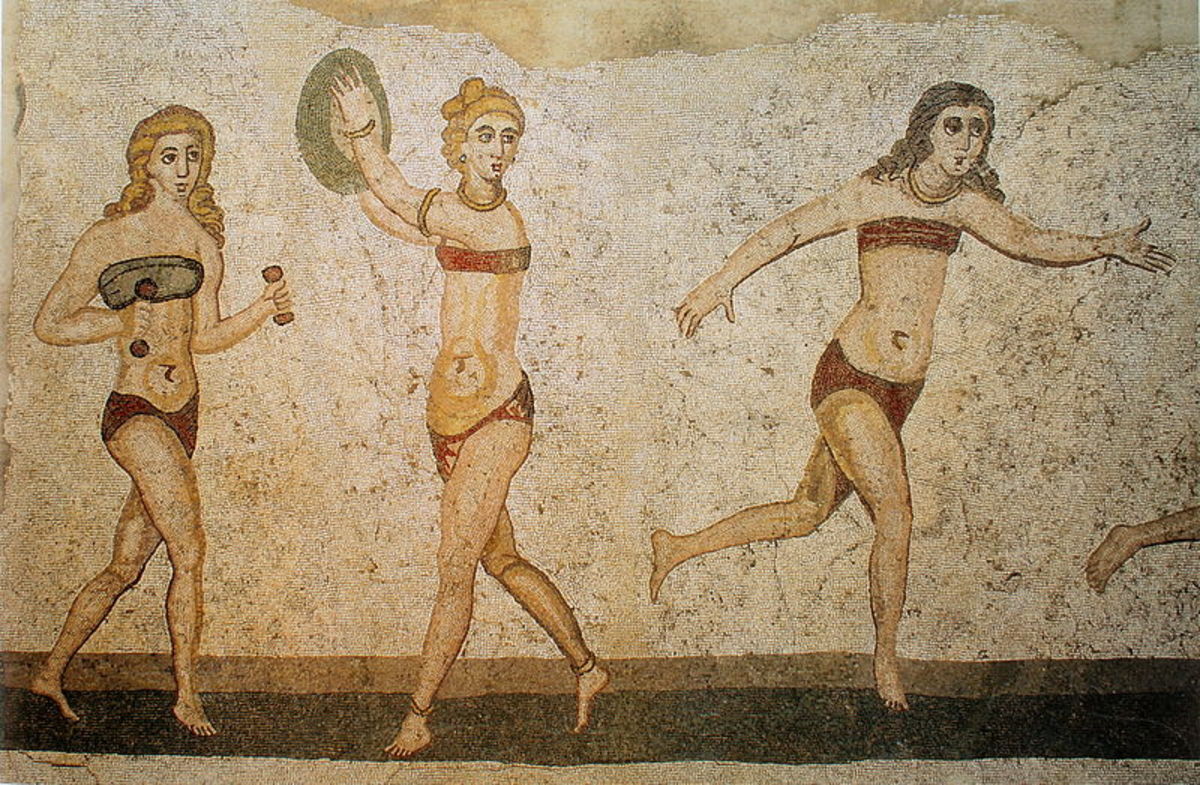Were Ancient Humans Smarter Than We Think?
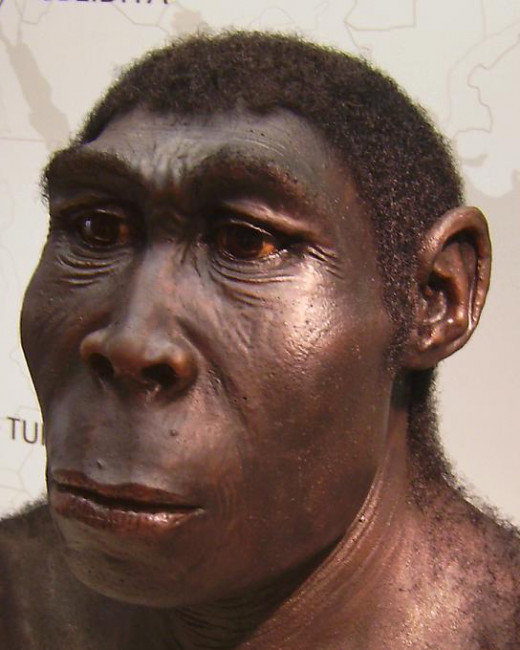
Former chapters
Part II: Brahma and the effect of Brahma
What Do Yo Think
Is our official history correctly interpreted by science?
Human Intelligence
Human intelligence seems to wander, which is partly confirmed by prof. Gerald Crabtree's research. This research became for some reasons controversial.
The bottom line is that science witnesses as well that Human intelligence was/is decaying, which is contradictory to the mainstream believes. The past is full of mysterious constructions.
Some of the constructions are still impossible to build despite our technological advancements. The pyramids of Kufu and Tiahuanaco are built with such an eerie precision that they are still miles beyond our reach. They are impossible to reproduce for us - not in precision neither in speed. How did they managed to do this? Were they smarted than us?
Just two simple facts that puts our technological advancement in its perspective:
- The great pyramid of Kufu was built twice as fast as we are currently capable of,
- The 2.5 million blocks (!) are cut with a precision that is around 100 times more precise than we are currently capable of.
So, it is impossible to built such constructions in the way science imagines, with hammer and chisel, ropes and trees This should be quite clear to any intelligent human being.
Time Frame of the Last Two Yuga's - Constructions, Artefacts and Events
Period
| Which Cycle
| Most prominent Official Records
|
|---|---|---|
>48,700 B.C.
| N.A.
| Thousands of officially unidentified stone structures found in Southern Africa, like the "Adam's Calendar", that is generally neglected by main stream archeologists.
|
48,700 - 46,300 B.C.
| Kali Yuga (lowest)
| Remains of stone-age civilisations found on all continents. No irrefutable proof found of highly developed civilisations.
|
46,300 - 43,900 B.C.
| Dwapara Yuga (upward/bloom)
| A large range of artefacts found at the Kostenki site in Russia. Humans constructed homes from Mammoth bones and animal skins.
|
43,900 - 40,300 B.C.
| Tetra Yuga (upward/bloom)
| Discovery of the 'Lion Man' as world's earliest figurative sculpture.
|
40,300 - 30,700 B.C.
| Satya Yuga (highest)
| Oldest Homo Sapiens findings all over the world / the Hohle Fels Flute is the oldest known musical instrument.
|
30,700 - 27,100 B.C.
| Tetra Yuga (downward/decay)
| Cave paintings discovered in Brazil
|
27,100 - 24,700 B.C.
| Dwapara Yuga (downward/decay)
| Ancient pyramid 'revealed' in Bosnia
|
24,700 - 22,300 B.C.
| Kali Yuga (lowest)
| Extinction of the Neanderthals
|
22,300 - 19,900 B.C.
| Dwapara Yuga (upward/bloom)
| Mysterious sunken pyramids found in the sea near Azores islands
|
19,900 - 16,300 B.C.
| Tetra Yuga (upward/bloom)
| Cro Magnon habitation discoveries
|
16,300 - 6,700 B.C.
| Satya Yuga (highest)
| Gobekli Tepe / Last glacial period / Dolmen found in large numbers all over the world / Great Flood (Arch of Noah)
|
6,700 - 3,100 B.C.
| Tetra Yuga (downward/decay)
| Offical dating of great Sphinx / Carnac in France
|
3,100 - 700 B.C.
| Dwapara Yuga (downward/decay)
| All highly developed civilisations are facing decay and eventually disappeared
|
700 B.C. - 1,699 A.D
| Kali Yuga (lowest)
| The whole world is plunged into darkness. Humanity is ruled by occultism, superstition and all kinds of new religions. At the end of the Kaly Yuga period the enlightenment starts to appear. In this period the Voynich manuscript was made, which is likely to be something occult
|
1,699 - 4,099 A.D.
| Dwapara Yuga (upward/bloom)
| This part of the history is partly well known. With entering the blooming period of the Dwapara Yuga the technological progress and mental consciousness of Humanity grows every year gradually. Real spiritual growth is only reserved for just a few. Most humans will rely on technical equipments.
|
What Does This Footprint Tell You?
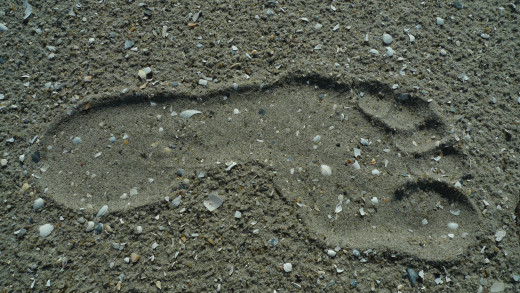
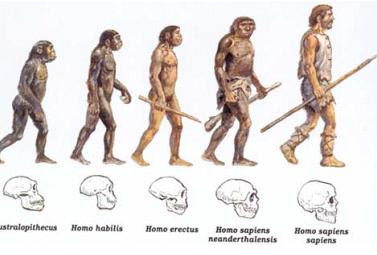
Mysteries of the Past
Archaeologists, Biologists and Geologists are constantly struggling with tensions between conventional theories and a stream of perceptible facts that are found all over the globe.
Adequate, intelligent explanations for most ancient sites are never given, because science is convinced that we developed from a very low mental state to the current state of development, while facts are showing something else.
Evolutionary progress is logical and something that's hardly deniable, but how is it possible then that primitive beings built such incredible things?
There must be another factor involved in evolution. Aliens?
The scientific system has the trait to stick to old theories even if the roots are rotten, and it is not illogical, because this is how things work that are based on fear, egoism and careers.
A few facts and subsequent questions:
- Homo Sapience lived along with Neanderthals during a period of at least 75,000 years and perhaps much longer, we just don't know it for sure. There are no proven signs that Homo Sapience were 'battling' with Neanderthals, but during cycles of low consciousness this doesn't seem unlikely. Who were these Neanderthals and why did they become extinct?
- Who were these people that made the mysterious structures all over the world, that used techniques that were so advanced that we are not able to reproduce the same quality and/or accuracy. Why are these structures still impossible to build with the current technology?
- How is it possible that we find all over the world similar structures like dolmen? And how is it possible that these Humans all over the world were capable to lift stones, without known tools, of more than 100 tons?
- Why do we find pyramid like structures all over the world? What purpose did they serve?
- Why did these highly developed civilisations and cities suddenly disappear or became abandoned?
- Why did many ancient cities and structures disappear into the sea or under a thick layer of soil/sand and why didn't this happen with the pyramids of Giza?
The past is in our conscious and subconscious mind programmed by school and college in only one way: our history was one big struggle for survival. But was it?
Archaeologists are not consequent in the way how our history is explained nor presented. The ruling theories are therefore illogical. The hunter/gatherer theories tell us that the ancient people were whole day occupied with the struggle for survival, gathering food, hunting for beasts, hiding in caves and warming themselves around a fire.
But in the same time they were busy with rock paintings, dragging along huge stones, and making huge dolmen like structures, that required hundreds of healthy strong men to make these structures. Why would they do this, if they were busy with survival only?
Experiment Performed in Borger (Netherlands)
How many men does it take to raise a dolmen?
Making a dolmen would require all healthy strong men from many different surrounding settlements. Just to make one dolmen.
In 2002, in Borger in the Netherlands, an experiment showed that it takes about 1 million man hours to build one dolmen. It took 14,000 people 16 days, 5 hours per day to make just one dolmen.
What does this experiment show us?
Required Time to Build All Dolmens
An experiment performed in Borger shows that raising a dolmen, that requires about 1 million man hours. It took 14,000 people 16 days to raise just one dolmen. How likely does this enormous human effort look in an ancient setting? Around 2000 BC there were about 50 million people on Earth.
- people had no time, they were busy with hunting/gathering/surviving,
- there were not enough people around at that time.
With an average of 0.4 people/km2, from which statistically 25% of them were strong and healthy enough to help raising a dolmen, there were simply not enough people around.
Making just one dolmen would take at least 250 strong men. Regarding the low population density at that time, it would take all strong healthy men in an area of 500 km2 around the location to build just one dolmen, during 6000 hours, in day light. That is a 'construction' time of around 400 days. Doesn't this violate all logic?
When was the last time an archaeologist made these kind of calculations? Maybe they aren't able to think logical?
With a total amount of about 85,000 dolmens around the world, it would take a mad amount of 85,000,000,000 (85 billion) hours to raise all those structures. So many people were not even present during that time. So, theories of archaeologists are contradictive on all major aspects. Contradiction is a sign of a false theory.
It is therefore illogical that ancient history looked according to the image presented to us, and it's unlikely that the prehistoric people lived like this during the whole history.
The Yuga cycles therefore provide the perfect explanation for these mysteries that will explained in the next articles.
Impossibilities and Contradictions in History
That ancient Humans could not have built dolmens in this way. Why not? Because according to the ruling theory:
- Hunter/gatherers were fully occupied with maintaining the tribe,
- Men were hunting and women, children, and old men were gathering berries, nuts and other foods,
- The rest of the time they were busy with preserving foods, making new weaponry and maintaining the household,
- There lived around 50 million people around 2000 B.C. at the time that part of the dolmens ought to be raised,
- Settlements are believed to be small between 50 up to 200 people. Some of the very large settlements were believed to be around 1000 people.
What does this show us? There's simply too much contradiction in the common explanations of ancient history. Ancient people would have no time to build dolmens, and they were not in sufficient numbers around at the location. So, how did they do it then?
Were the ancient people smarter than we assume? Evidence of skulls doesn't show they were smarter than us. But when we introduce the Yuga cycles on human consciousness, it has a dramatic effect on their spiritual capacities.

